Honor 20 Pro vs OnePlus 7 Pro
Battle of the budget flagships
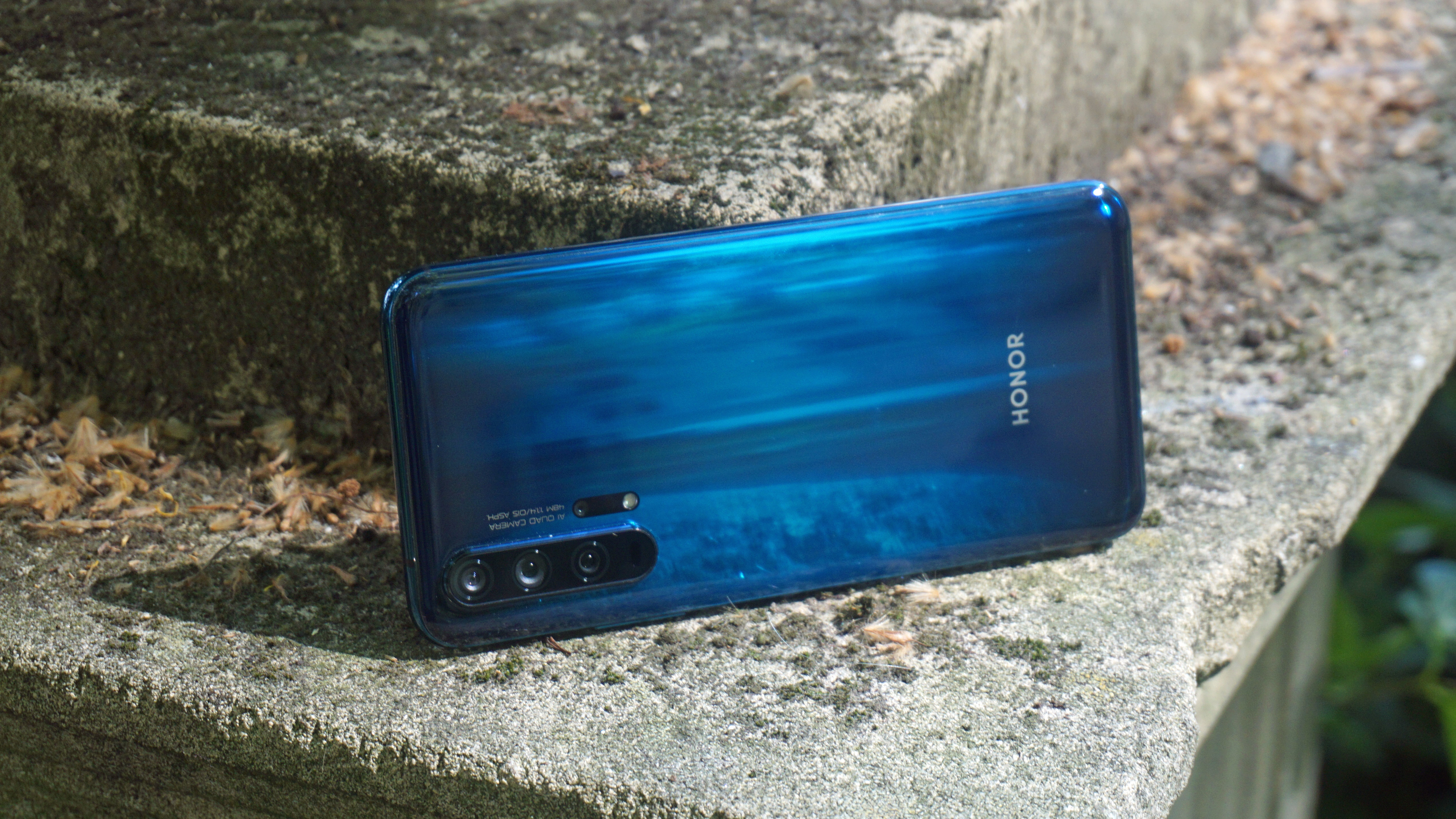
While the Honor phones have typically packed trickled-down features from top-line Huawei phones at a cheaper price, the Honor 20 Pro is specced so highly that it could easily go toe-to-toe with other ‘budget flagships’ that have cropped up. Lo and behold, one recently launched that’s ideally poised to compete with the Honor phone’s best aspects: the OnePlus 7 Pro.
We’re going to figure out which of these two admirable smartphones is better, and inevitably, which makes it into our best smartphones list.
As with all our versus pieces pitting competitive phones against each other, these are both great picks. But we’d be remiss not to point out the current events that may leave Huawei locked out of Android, which could affect the phone’s features down the road given the uncertainty that Google will allow the company’s devices access to Android updates and the Google Play Store. In this category, and at this time, the OnePlus 7 Pro is a safer bet.
Politics aside, both phones are well-matched, though keep in mind we’ve had a little more time with the OnePlus 7 Pro, so we’ll mention where uncertainties with the Honor 20 Pro leave comparisons a little murky. Without further ado, let’s dive in to which is truly superior.

Honor 20 Pro vs. OnePlus 7 Pro design
Both smartphones are pretty similar in design, following the ethos of their predecessors: the Honor 20 Pro has a flat front and curved rear edges with a camera blister in the top right corner (much like Huawei’s P-line), while the OnePlus 7 has both edges curve to meet each other at the sides and a centrally-aligned camera bump on the back. Between the two, we prefer not to have the Honor 20 Pro’s lopsided bulge.
In effect, this makes the OnePlus 7 Pro just a little more luxe – as does its signature feature, a pop-up periscope that houses the front-facing camera. In effect, this leaves the front display unblemished thanks to an eye-catching cool trick.
The OnePlus 7 Pro again takes the cake in biometrics with its in-screen fingerprint sensor; the Honor 20 Pro’s side-mounted sensor within the power button is a nice out-of-the-way touch, but it’s less easy to activate while the phone is lying flat.
Get daily insight, inspiration and deals in your inbox
Sign up for breaking news, reviews, opinion, top tech deals, and more.
By a respectable margin, the OnePlus 7 Pro wins this round, though both are attractive and well-designed by 2019 phone standards.

Honor 20 Pro vs. OnePlus 7 Pro display
We’ll cut to the chase here: by all metrics, the OnePlus Pro 7’s display is superior, though the Honor 20 Pro’s screen is no slouch.
It comes down to resolution, refresh rate and holes for the front-facing camera – the Honor 20 Pro has one as a punch-hole, the OnePlus 7 Pro does not. You'll also find a 90Hz screen refresh rate on the new OnePlus, so it scrolls and plays games more smoothly than the standard 60Hz refresh rate.
The rest comes down to a numbers game. The Honor 20 Pro has a 6.26-inch LCD screen with a resolution of 1080 x 2340 pixels, for about 412 pixels per inch. The OnePlus 7 Pro’s 6.67-inch AMOLED display is 1440 x 3120 pixels for a whopping 516 PPI, giving a sharper screen in the same 19.5:9 ratio.
Whether you like bigger phones might tip your own scales (the OnePlus 7 Pro is half an inch bigger diagonally), the higher quality of the OnePlus phone’s display wins it this round.
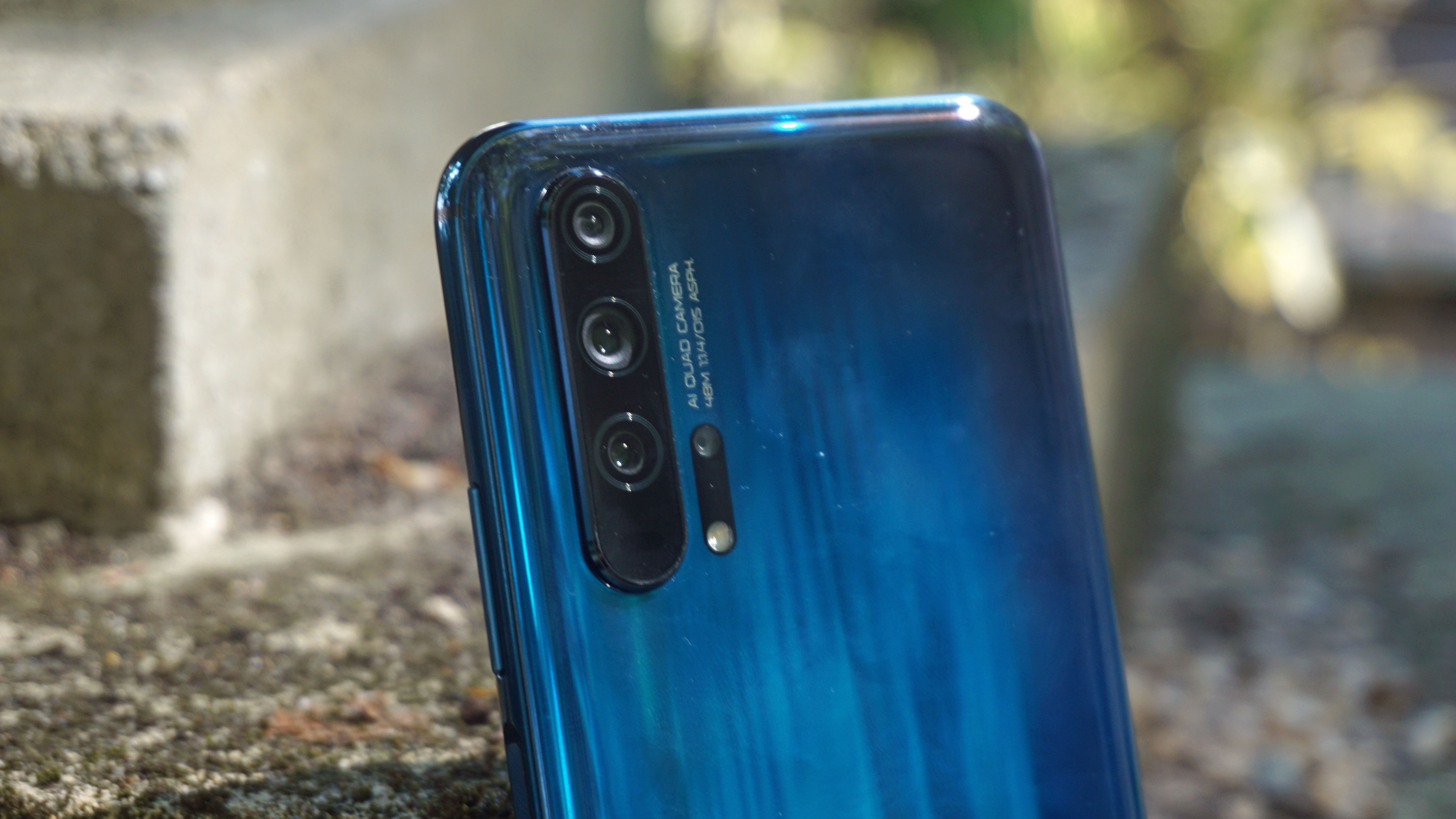
Honor 20 Pro vs. OnePlus 7 Pro camera and battery
This category might be the biggest slugging match between the two phones – and ironically, the one we might have the least justification to answer, since we haven’t had time with the Honor 20 Pro to properly compare camera samples. Await our full review to fully compare the two.
In terms of sheer specs, the two are...nearly evenly-matched. As in, their camera suites are almost identical: both have 48MP main cameras (f/1.4 for Honor, f/1.6 for OnePlus), 16MP f/2.2 ultrawide lenses, and 8MP f/2.5 telephoto shooters with 3x optical zoom.
The Honor 20 Pro may have the slight advantage with an extra 2MP f/2.4 macro camera as a fourth lens, which could be super convenient for those who want to take photos of subjects from up close. We’ll have to see how much it comes in handy in our full review.
As for selfie shooters, the Honor 20 Pro again has an edge, with a 32MP front-facing camera compared to the 16MP lodged in the OnePlus 7 Pro’s pop-up tab. Plus, we don’t know how durable that periscope mechanism is – not until we’ve tested it, or at least seen whether it breaks in accidental falls.
For cameras, the Honor 20 Pro slightly edges out the OnePlus 7 Pro, but this could change when we see photo samples.
As for battery, both have a 4,000mAh capacity – though the OnePlus 7 Pro’s 30W fast-charging beats the Honor 20 Pro’s 22.5W fast-charging.
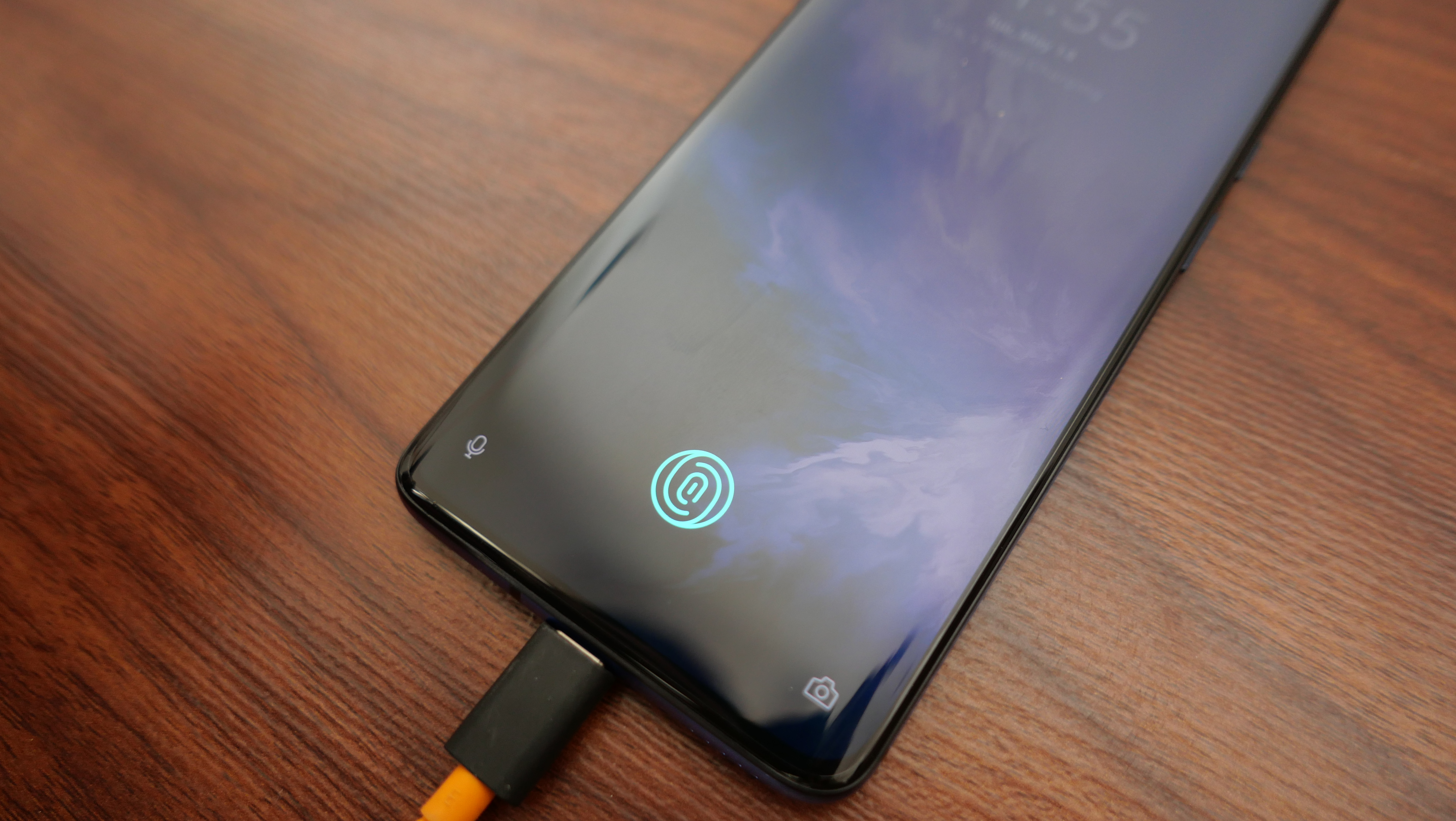
Honor 20 Pro vs. OnePlus 7 Pro power
This one’s a little trickier to compare since we haven’t tested the Honor 20 Pro, but we can make a bit of an educated guess.
The Honor 20 Pro packs a Kirin 980 processor, which debuted in the Huawei Mate 20 Pro late in 2018. It’s also featured in a more recent phone, the Huawei P30 Pro, which in our testing scored 9,669 in a Geekbench 4 CPU test.
The OnePlus 7 Pro is powered by an even newer chip, the Snapdragon 855, and scored a 10,960 on the same Geekbench 4 test. In sheer numbers, the OnePlus 7 Pro comes out on top, and is a little bit more future-proof.
In terms of other specs, the Honor 20 Pro has only one configuration of 8GB RAM and 256GB of storage. The OnePlus 7 Pro starts at 6GB of RAM and 128GB of storage, upgradeable to 8GB of RAM and 256GB storage (or even a 12GB RAM model). The OnePlus 7 Pro is the winner here, but you’ll have to pay for the privilege.
Otherwise, both phones come with Android 9 out of the box – though given Huawei’s trouble potentially getting cut off from Google support (and Android/Google Play Store access), OnePlus 7 Pro wins for long-term safety.
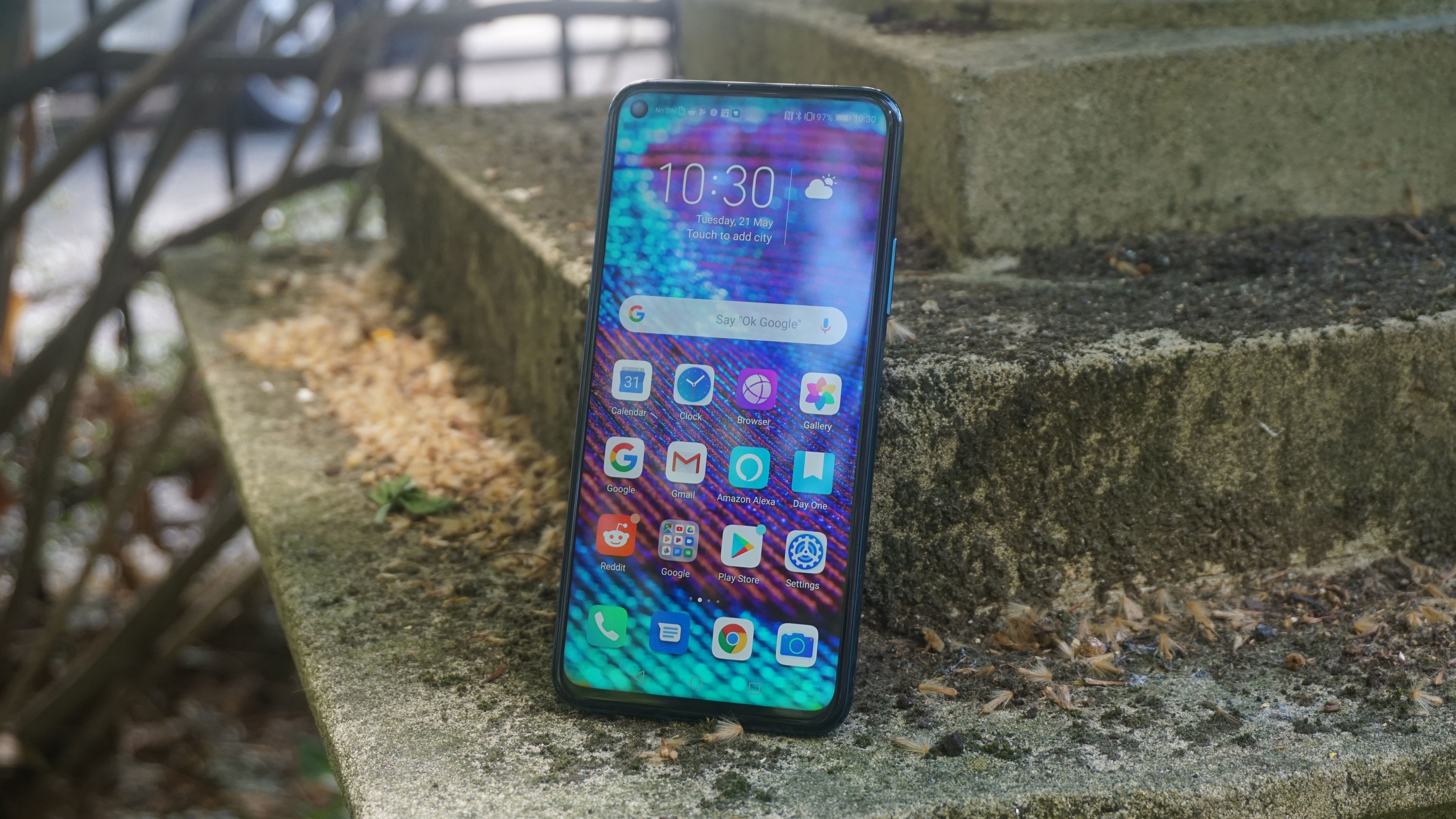
Honor 20 Pro vs. OnePlus 7 Pro price
The Honor 20 Pro costs €599 (around $668, £471, AU$971), which puts it right at the $669 / £649 (around AU$971) starting price of the OnePlus 7 Pro. This is a price deadlock, and as you’ve seen above, their features are very comparable, with differences that might come down to taste.
And yet, for some readers, the OnePlus 7 Pro comes out ahead purely by accessibility. Even before the recent ban on US companies working with Huawei, it was difficult to acquire the company’s phones in America and other regions who followed the US’ lead in keeping them out of stores and far from carriers. The OnePlus 7 Pro, on the other hand, is available in the US in T-Mobile stores and online.
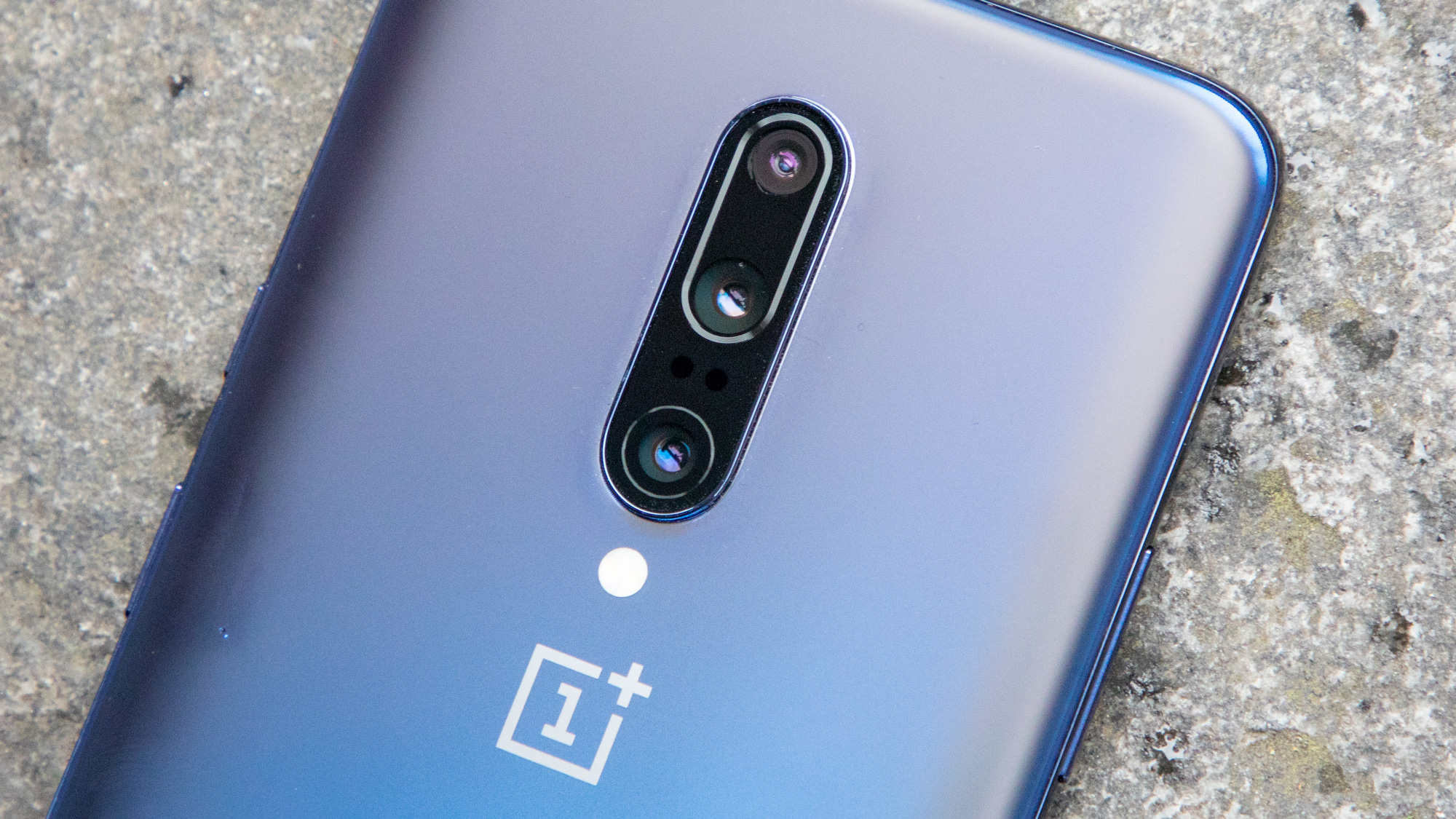
Takeaway
This isn’t the most fair competition, as we haven’t had time to unpack a complete understanding of the Honor 20 Pro. But from what we know, the OnePlus 7 Pro is simply, if barely, the better phone. Its sharper (and unblemished) display paired with slightly faster charging makes up for one less (inconclusively useful) rear camera lens. Plus, in our professional opinion, it’s a bit prettier of a phone.
But that shouldn’t dissuade anyone from picking up the Honor 20 Pro, which is a strong contender for smartphones at this cost category – the “budget flagship,” as it were. Unfortunately, both of these creep close in price to the iPhone XR and Samsung Galaxy S10e, which are arguably better phones than both of these.
But if you don’t want to spend the ~$100 to get to those higher-quality devices, the Honor 20 Pro and OnePlus 7 Pro are both smart picks.
- See how these phones stack up to our best phones list
David is now a mobile reporter at Cnet. Formerly Mobile Editor, US for TechRadar, he covered phones, tablets, and wearables. He still thinks the iPhone 4 is the best-looking smartphone ever made. He's most interested in technology, gaming and culture – and where they overlap and change our lives. His current beat explores how our on-the-go existence is affected by new gadgets, carrier coverage expansions, and corporate strategy shifts.
